dovetails and tennons and boards, oh my!
if you had to reduce your woodworking tool collection to just what you could carry in your hands, the very short list would include a saw. probably a couple of them. other than chisels, they are the most versatile tools in the shop and no woodworker would really get anything done without them. there is a huge amount of debate about what makes a good saw and whether pull or push saws are better. i’ll leave the debates to when i’m teaching and simply give some recommendations based on what type of saw you’ve decided to buy.
one thing to keep in mind is that names and classifications of saws are very flexible. you can do almost anything with any saw but certain ones are better for fine or rough work, for example. the names put on them are irrelevant. something else useful to remember is that it’s easy (while slow) to rip with a crosscut saw but extremely difficult to crosscut cleanly with a rip saw. if you have to choose, get a crosscut saw. if you don’t have to choose, get both. don’t just get a rip saw.
some saws (especially framesaws and bowsaws) are extremely easy and cheap to make. if this is something you’re interested in, wonderful. else where on the site you’ll find some helpful guides and there are various others floating around online including realtime tutorials (i am particularly impressed with james wright‘s live tool builds). this page is for new, easily-available saws. if you want to learn about the difference between tooth patterns, how to use a saw, how to make a saw or (if you’re really hardcore) how to sharpen a saw, browse the educational materials or come take a class. for now, on to the shopping.
pull-saws
while not all pull-saws are japanese, japanese-style saws are by far the most common variety that appears in the west and all my recommendations are for saws in that style. these are easy-to-use, extremely thin and give great cut quality and relatively straight lines with minimal effort. these are not in any particular order. i highly recommend them all. what i will say, though, is that my personal favorites, the ones that are sitting next to me as i write this, are the suizan folding saws. they’re not the most beautiful or most handmade i’ve used but they are the saws i’m happy to reach for every time. while not sponsored or affiliated in any way, i would highly recommend katz-moses woodworking as a supplier for these saws. the z-saw and gyokucho models of these are also excellent quality but i generally find them to be more expensive for a similar saw and the suizan handles feel better in my hand. this is very much a question of personal preference but this is mine.
suizan folding ryoba ($45)
this is the one saw that can do just about everything. it cuts quickly and has two different tooth patterns, one on each side of the blade, one for finer cutting, the other for faster, rougher cuts. folds up nicely and gets the job done. if you’re starting out and you want one saw, this is the saw. if you don’t have a saw like this, again, this is the saw you need.
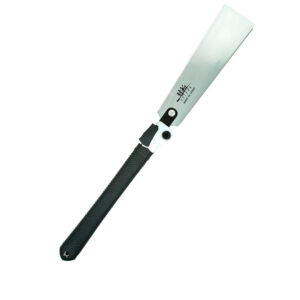
suizan folding dozuki ($45)
this saw’s 24cm blade has a solid back, allowing easy cutting of dovetails and other fine joinery. it’s well-balanced and folds into a tight package both to protect the blade and to make transportation and storage easy. if you want to do hand-cut joinery and you’ve already got the ryoba above (or another high-quality ryoba), this is your second saw.
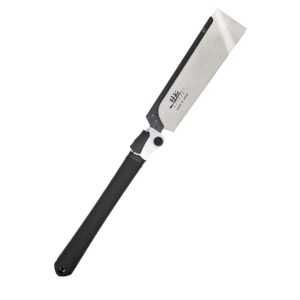
suizan kataba ($?)
this 27cm saw is single-sided and built for more aggressive, larger panel cutting. it’s the same quality of blade and handle as the ryoba but for larger-scale work. the lack of pricing is mostly because i can’t find anywhere that reliably stocks it at the moment. it’s usually considerably less than $100 if you can find it.
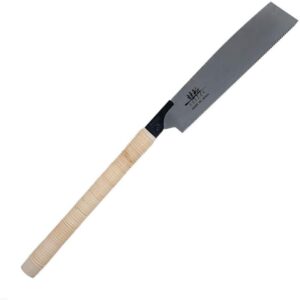
push-saws
western-style saws cut on the push-stroke. while this movement feels a bit alien to me, it may be more comfortable for you if that’s what you’re used to. there are more manufacturers of western saws than i can possibly count but i will address a few that i highly recommend for quality and value. my unquestioning pick for push-saws is veritas (lee valley tools’ manufacturing arm). they are not the prettiest saws but they are just as good for cutting and quality as any of the premium, more expensive brands. that being said, sometimes the joy is in the beauty of the tool so i will include several of those here, too.
veritas carcass saw ($110)
if you’re a push-saw user and you don’t have a quality saw, this is your first buy. with a 1.8mm pitch (14tpi) and a 28cm blade, this is large enough to cut most things, especially joinery, but small enough not to be cumbersome. the tight pitch means your cuts will be clean but it’s not so tight as to make it a slow saw. this is your does-everything saw. this comes in versions labeled crosscut, rip and hybrid. get the crosscut one. you’ll thank yourself later.
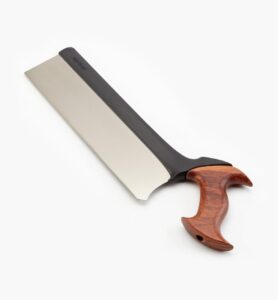
veritas tenon saw ($170)
with a looser pitch (2.8mm on the rip, 2.1mm on the crosscut) than the carcass saw and almost twice the depth capacity, this is a rougher tool. if you want to work faster and put more power into the board (not too much, please, or you’ll start cutting curves), this is likely the saw you’re looking for. the 41cm blade will let you work with larger panels more easily but remember it will require more cleanup than the carcass saw due to its rougher cut. if you find yourself limited by the depth of the carcass saw, this might be your second saw. if you don’t need the extra length and depth and cut primarily joinery, this may not be a necessary purchase.
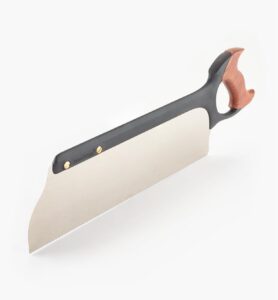
bushcraft saws
while not specifically for fine woodworking applications, many woodworkers work with green wood for things like spoon/bowl carving and turning. these are my recommendations for saws to deal with trees and branches.
silky gomboy ($50)
while not a particularly unexpected recommendation, i think this is the best bushcraft saw on the market. some people prefer the super/ultra excel models but i find them more cumbersome to use and more twitchy to transport. they’re excellent saws but i suspect you’ll enjoy the gomboy more. it’s available as 210, 240 and 300mm. pick the length that suits your needs. i like the 240mm and suggest that’s a good place to start. blades are replaceable and relatively inexpensive. the saw folds into a very manageable package for transportation and to protect the blade. this saw is available in a non-folding version, too. buying that one won’t save you any money and you’ll definitely regret the lack of portability. this is a bushcraft saw. if you’re not taking it with you, you don’t need it.
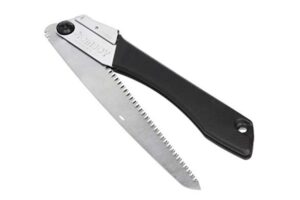
silky katanaboy ($175+)
if you spend a lot of time in the forest and need a larger saw than the 300mm gomboy, the katanaboy (available in 500, 650 and 1000mm sizes) will get the job done. at this point, you may be starting to wonder why you haven’t brought a chainsaw but the quality is excellent and the portability is surprisingly good for a saw that’s almost as big as me.
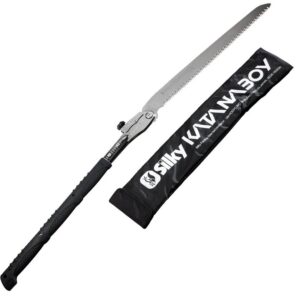
premium saws
so you’ve got some nice saws and they work just fine but you want something that feels more special. for japanese saws, you don’t need my recommendation. you need to visit a craftsperson who will custom-build you a saw and that will be someone local to the part of the country you’re in. if you need a recommendation for your prefecture, let me know. as for western saws, these are the brands/makers i’d suggest looking at. these recommendations are unsolicited and i have no connection to the brands i am talking about here other than appreciating their work. i get nothing from them if you purchase a tool.
bad axe toolworks
these are beautiful saws. the handles are molded to the hand and the build quality and materials are excellent. they don’t cut any better than the veritas saws but the extra cost is reflected in the feel and look of the tools. visit them here.
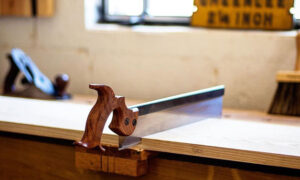
florip toolworks
some of the most striking saws i have ever seen while remaining reasonably-priced come from tool maker florip toolworks in michigan. their attention to detail, quality folded-brass construction for backsaws, high-grade steel and formed handles make them a joy to use. take a look here.
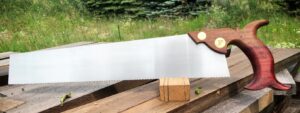
other premium saws
sticking to the premium saw theme, these are some more makers who create extremely beautiful saws. as i have said several times, the benefit to these saws is not that they cut better. it’s that they cut just as well and look and feel stunning at the same time. the three other brands that i would suggest taking a look at if you’re shopping for a premium saw are rocky mountain sawworks, bontz sawworks and alamo toolworks. these are all very small and waiting delays are long – if you are looking for a premium saw, though, you likely already have several that work just fine and this is a treat, not a necessity.
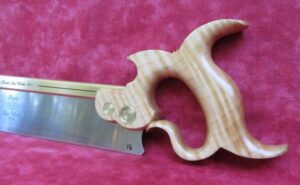
Share this:
- Click to share on Twitter (Opens in new window)
- Click to share on Facebook (Opens in new window)
- Click to share on LinkedIn (Opens in new window)
- Click to share on Tumblr (Opens in new window)
- Click to share on Pinterest (Opens in new window)
- Click to share on Pocket (Opens in new window)
- Click to print (Opens in new window)